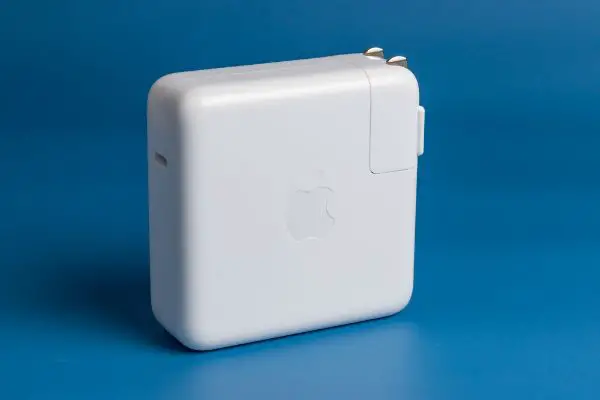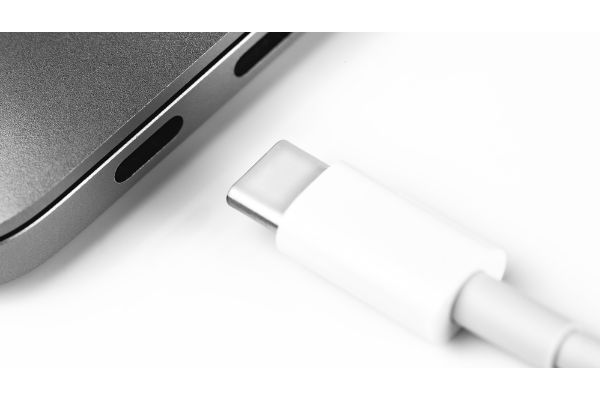Disclaimer: This post may contain affiliate links, meaning we get a small commission if you make a purchase through our links, at no cost to you. For more information, please visit our Disclaimer Page.
Computers have become both more powerful and more compact as technology has advanced, and the laptop is a prime example of this. A portable computer with more power and capabilities than its predecessors that used to fill entire rooms. Sometimes, you just need a laptop that can do a few relatively simple tasks without any extra bells or whistles, and this is where Apple’s MacBook comes into play.
The MacBook is the company’s own version of a notebook computer that runs on the macOS, and it is a great option for fans of Apple who need a companion to their desktop rig. As with all laptops, the MacBook has a battery that allows you to use it away from a dedicated power source for extended periods. It comes with its own charger to keep the battery full when you do have access to mains power.
Some MacBook users wonder if there is any point at which they might want to consider replacing their charger units. We will cover this topic in our article, including going over some of the basic guidelines for how long one should be able to expect a charger like this to last.
Additionally, we’ll talk about Apple’s own company policy for replacing broken or defective chargers, why the chargers can take on slightly different shades in color over time, and some of the possible reasons why you have a MacBook charger that may have stopped working.

(Attribution: ©[RMALAYTE]/Depositphotos.com)
Table of Contents
When Should I Replace My MacBook Charger?
Technically, there is no hard rule for when you should replace the charger for a MacBook. Most chargers are relatively robust pieces of equipment, and they should last for several years unless there is either damage or an obvious defect in their construction.
When you take a look at something like battery life, many tech people will probably tell you that batteries for laptops are good for at least five years.
Most of the time, batteries are rated to give you a good charge for a minimum number of cycles before they start to degrade in terms of holding a charge or getting a full one. These are simply guidelines that each company uses as a way to guarantee the absolute minimum of battery functionality.
That way, they may replace one for you under specific warranty conditions, but only if it isn’t negligence or damage outside of normal operations that is causing it to not hold a charge for the recommended cycles.
Chargers or adapters themselves work a bit differently than the batteries to which they give energy. Generally, chargers don’t have expiration dates like batteries do. This means that they can work for many years, even if they show signs of surface wear and tear, and still function at a perfectly acceptable level.
Any part that has things you’ll need to plug in or unplug regularly can suffer from some wear over the years, and it is possible that your MacBook charger may go through some kind of failure eventually. However, if the charger is making an appropriate connection to the laptop, and if you can see that the battery is charging, the component probably still works fine for your purposes.
Although a slower charging process could indicate an issue with the power adapter itself, it is more likely that you’ll face an issue with the battery long before you’ll have any kind of problem with the charger.
There are other signs to look for, but if you plug the computer into your factory charger and find that the battery is receiving no energy from the outlet, then it may be a good sign that it is time to replace the charger.
How Long Do MacBook Chargers Last?
We touched on this briefly in our previous section, but chargers can last a very long time. If you don’t get a defective charger along with your MacBook, and if it is not subjected to any kind of abnormal abuse, you can expect it to last for many years.
Some consultants who have been working with Apple in some capacity for decades have never witnessed charger failure. The common theme in these cases is not to abuse the charger, particularly the cable. Plug the device into the wall outlet in a straight line and make sure there is a firm connection.
You should always grip the charger near the port and pull it out gently. Never try to disconnect the charger from the wall or the MacBook by yanking on the cable. If you remember these short guidelines, your charger might last for decades without an issue.
Will Apple Replace a Broken MacBook Charger?
Apple might be open to replacing a broken MacBook charger. However, this decision would be subject to the support staff’s examination of your item. In fact, you can even bring your charger with you if the MacBook and its parts are out of warranty.
Because the charger has no guidelines on how long it is supposed to last, the company may be willing to replace it. A member of the support staff will examine the charger for any obvious signs of damage that fall outside of however Apple might define the usual wear and tear of its items.
In doing so, the company may determine that there is no reason why your charger should have stopped working in the first place.
Apple’s limited warranty covers manufacturing defects. If there is no reason why your charger shouldn’t be working to its fullest potential, it may be more likely that you’ll get a replacement from the company.
It is important to remember that things like bent pins, frayed wires, and other things that are probably outside the scope of normal use for a charger mean that it probably won’t be covered for a replacement.
Unless you received a charger in this poor condition when you purchased your MacBook, there is less of a chance of Apple’s support staff deeming this kind of device worthy of a replacement. Normal charging operations should not produce frayed cables or other issues that result in such obvious physical damage to the product.
Why Do MacBook Chargers Turn Yellow? Should I Be Concerned?
Some users may notice that their MacBook chargers seem to take on a yellowish tinge over time. This change in color can apply to both the power adapter itself and the charging cables that plug into it. For various reasons, this could be a sign that the material is degrading over time. However, that does not mean it is degrading in a way that is making it unusable.
The discoloration is simply normal wear and tear that shows up on the previously white design. By itself, it should not be an issue, and there is probably no cause for concern.
Handling the charger and its cables over a period of many years can cause some discoloration. It is also possible that exposure to UV light can play an issue. You take your MacBook out with you often, and you may take the charger along in order to conserve the battery’s energy whenever possible. If so, your charger may sit in sunlight quite often.
While this should not harm it, it can cause the stark white colors for which Apple is known to become more yellowish over time. If it gets hot in the sun, this could also be something that is helping to speed this process up, too.
Plugging the charger into the laptop and having it run will also produce a little heat as energy is transferred between the two devices. Although this buildup should be fairly minor, using the charger like this for several years might add to the way that the unit changes its color.
Unless there is another issue with the charger or its cable, there is no cause for concern over just the yellowing of the unit. You should be on the lookout for things like excessive heat retention in the adapter, sparks, frayed wires, or other things that point to a problem.
The yellow coloring may not happen to your MacBook charger at all, even after several years of use. However, if it does, it is only something that signals its age, although some environmental factors might speed up this cosmetic process.
Why Did My MacBook Charger Stop Working?
If your MacBook charger ceases to function, there are a few things you can check to see if you can identify the problem:
1. The cables on chargers need some form of strain relief. This keeps them functioning without any tearing or fraying. Check the ends of the cables to make sure there is no sign of the insulation degrading.
Make sure the wires are connected to the port ends firmly. When you do use the cable, check to be certain that there are not many bends in it.
2. Although a tiny spark from the end of the adapter as it goes into an outlet can be a normal occurrence, this is the only position from which you should see such a thing.
If you notice sparking anywhere else, there could be a big problem with the unit’s insulation. You should discontinue use of the charger immediately.
3. You may have line noise that causes interference with the adapter. To check for this, you can unplug it for at least a minute. Once done, plug it back in to see if it works. If so, just repeat this process every so often to deal with line noise.
4. You can swap out the removable plug at one end of the charger with another one that is compatible. If this works, it may be an issue with the prongs on the original plug.
5. Depending on the location in which you charge the MacBook, its power adapter could get too warm. If this happens, it may shut itself off temporarily to deal with the heat. Wait for it to cool down before trying it again.
Conclusion
MacBook chargers are made to last, and there is no reason that yours should not serve you well for many years under normal strain or use. If you do find that there is an issue, it is best to check the cables and the ports for obvious signs of damage.
You can also bring the charger to Apple’s support staff, and the company may replace it for you. Although some chargers get yellow over time, that is usually not a sign of anything bad happening to them.

